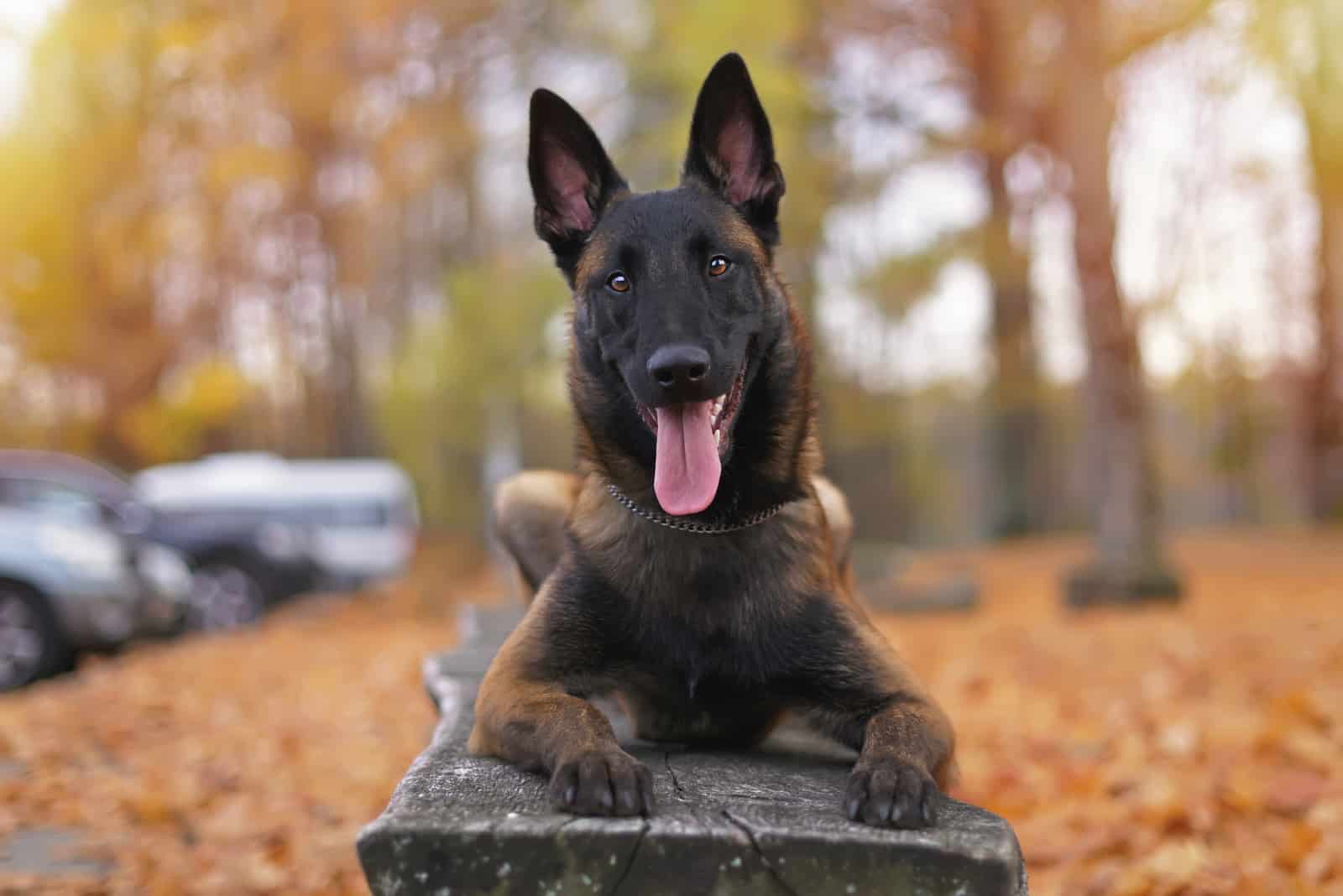When you think of loyalty or a noble appearance in dogs, chances are you think of the Belgian Malinois. These dogs that look like slim German Shepherds are loved because of their perfect mixture of tough and elegant looks.
The Malinois are working dogs that are used for a variety of tasks by the military, such as explosive and narcotic detection, tracking humans, and rescue missions. They are even used as guard dogs in the White House!
At the same time, Belgian Malinois can make amazing house pets – if you know how to deal with this strong and independent dog breed. It’s no wonder many people want to know all about Belgian Malinois colors!
Do these dogs always come with a black mask, and can they come in colors other than brown? Here’s what you need to know!
Breed History And Appearance
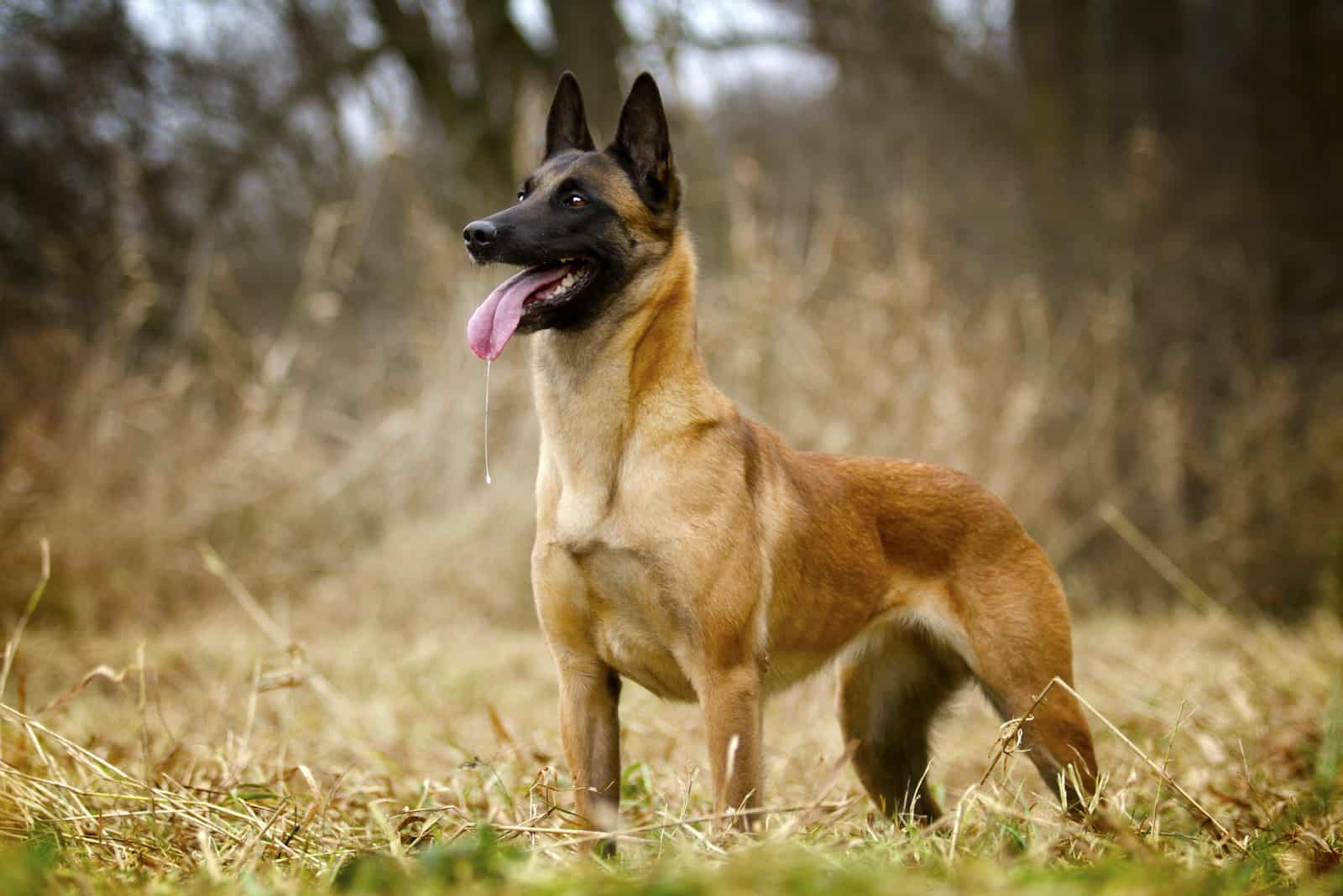
The Belgian Malinois is a loyal and intelligent dog breed. These medium-sized canines were bred to be used as herding dogs. They’re a separate breed of German Shepherd dogs, although they look similar and were used for similar jobs.
In fact, Mals belong to Belgian Shepherd dogs, and they are one of the four breeds that fall into this category. The other three are the Belgian Laekenois, the Belgian Tervuren, and the Belgian Groenendael. They are registered in France and Belgium as the Chien de Berger Belge.
The Belgian Malinois were named after the city of Malines. It is there that these dogs were developed by breeders and trainers, as well as working competitors.
These dogs arrived in the USA around 1911 and quickly gained popularity. Many Malinois were used in World War I. The Belgian Malinois breed was finally recognized by the American Kennel Club (AKC) in 1959.
Today, these Belgian sheepdogs are used as police dogs, drug detection dogs, military working dogs, as well as search and rescue dogs.
Overall, these are shorthaired, medium-sized dogs that are strong but slim. They have tall, pointy ears and elongated faces. Together with Rottweilers, Dobermans, and Pitbulls, they are considered among the most dangerous dogs, despite their friendly nature toward their human owners.
Their usefulness as guard dogs influences their price, and these can be very expensive dogs – especially if you pick one of the rare Belgian Malinois colors.
Differences Between Belgian Malinois Dogs And German Shepherds
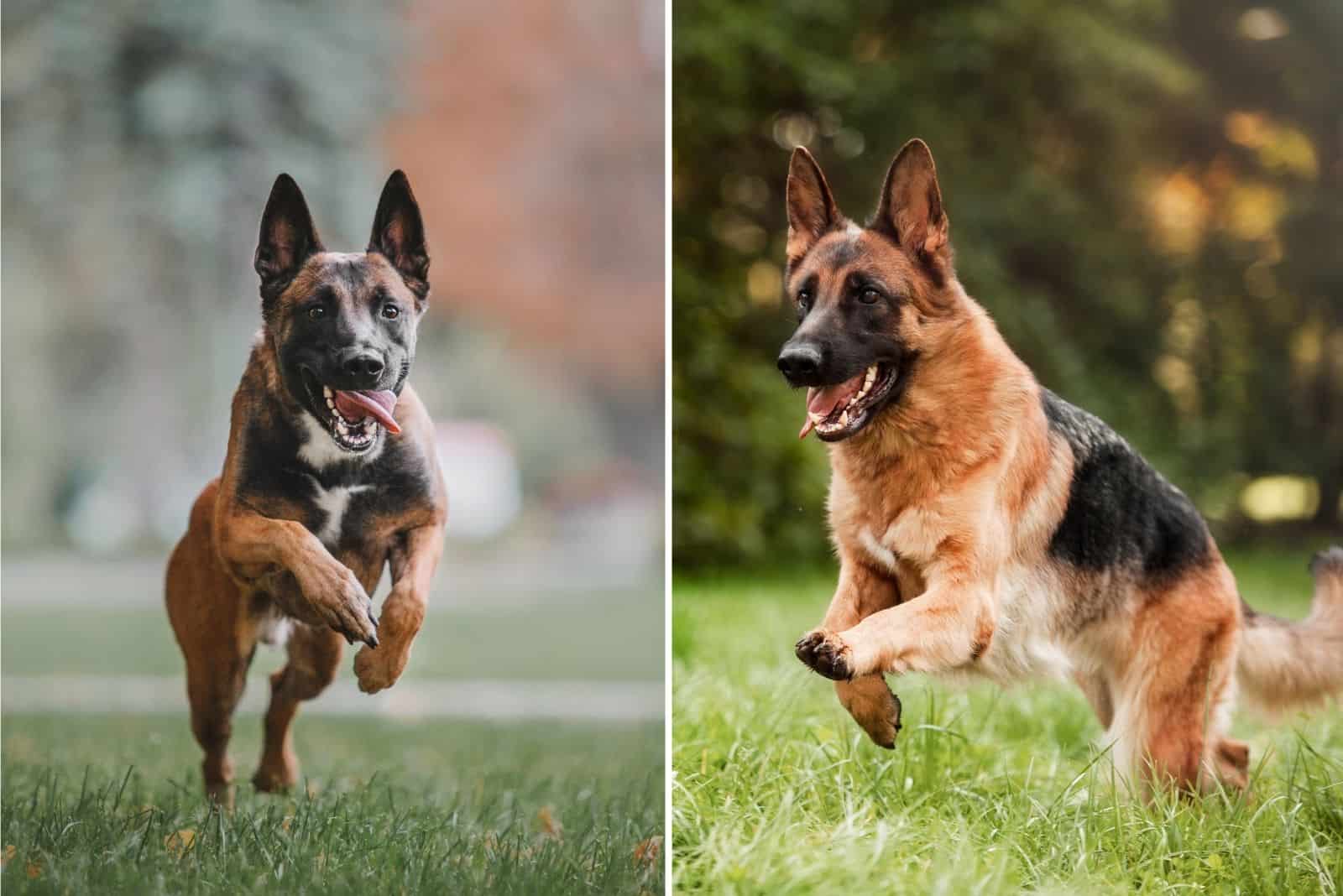
As mentioned before, unlike what many people think, Mals and German Shepherds aren’t related. In fact, these dogs are more closely related to Border Collies than GSDs!
Here are some of the key differences:
• As their names suggest, Mals were bred in Belgium, while GSDs originate from Germany.
• German Shepherds are quite a bit larger than Belgian Malinois.
• Most Belges have a shorter coat, while German Shepherds tend to be more on the fluffy side.
Of course, as both come from shepherd dogs, they share certain personality traits. Both of these dog breeds have a high energy level that can be difficult to keep up with. They require a lot of exercise and have plenty of stamina, so they need to play around and run all day long.
Both have a strong prey drive that can make them unsuitable for small animals and smaller dogs. At the same time, both are popular breeds among military and police dogs.
Finally, the Belgian Malinois colors can be quite different from colors you can find in German Shepherds.
Belgian Malinois Coat Type And Grooming
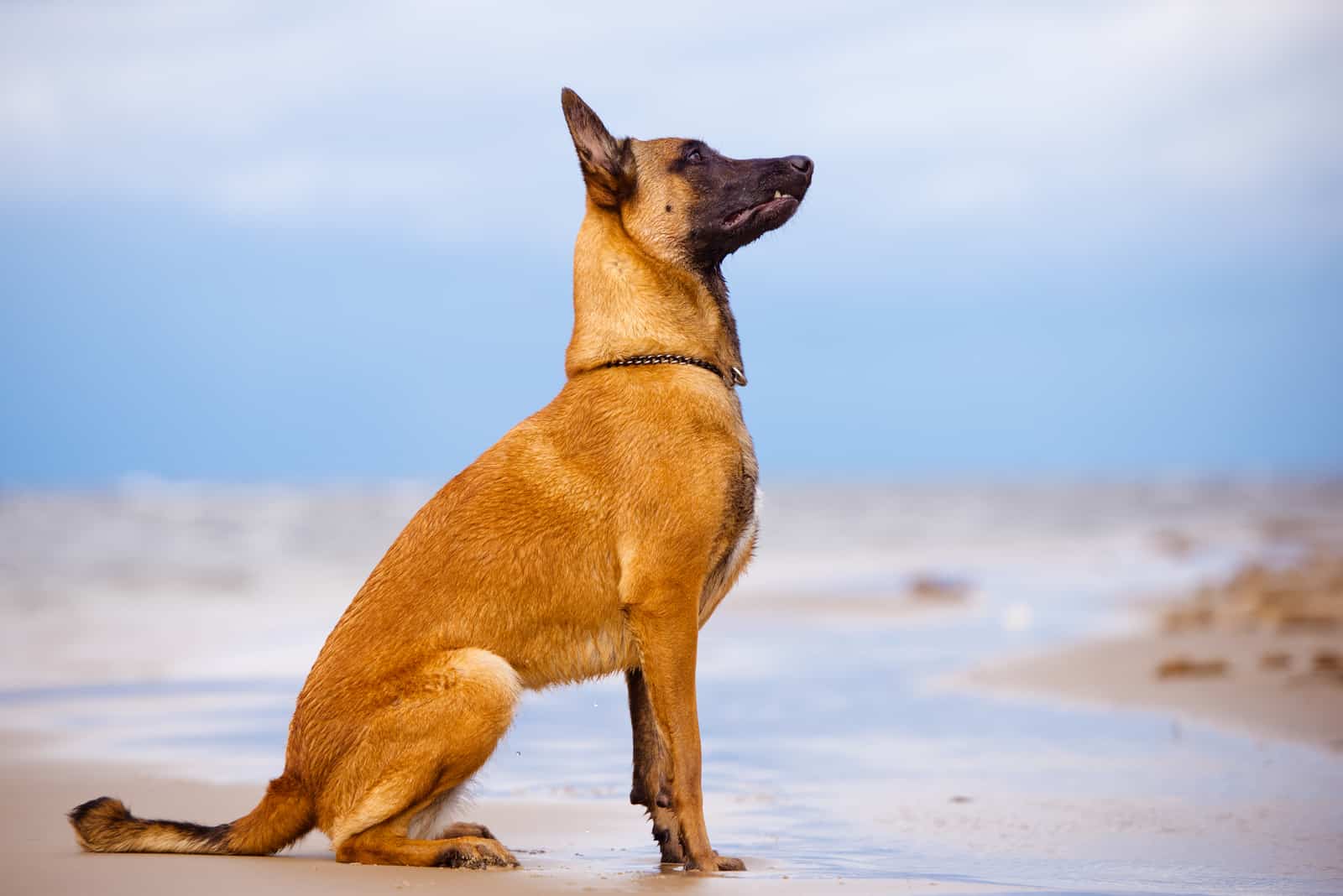
The Belgian Malinois has a short double coat that is easy to take care of. They require little grooming, and they are fairly clean and odorless dogs, so you won’t spend a lot of time maintaining them.
However, because of their dense undercoat, they are not hypoallergenic dogs by any means. They’ll experience a lot of shedding, and their hairs can fly everywhere. This means you’ll spend a lot of time cleaning after them.
To make sure they retain their beautiful coat, you need to make sure these dogs are healthy. To do so, give them only high-quality dog food rich in good nutrients. These are active dogs, so make sure they eat food that can fit their energy levels.
Regular nail trimming is a must, and keep their ears clean as they are prone to infections. If needed, take them to the vet for dog ear plucking. Also, brush their teeth at least a few times a week.
Many dogs have dental issues, and this can lead to more severe problems further down the road.
Of course, with such an independent breed as the Belgian Malinois, you need to dedicate a lot of time to dog training and socialization. It’s better to start early with these dogs, as anything else can lead to behavioral issues, and Mals can be hard to handle if you let them be.
Belgian Malinois Coat Colors
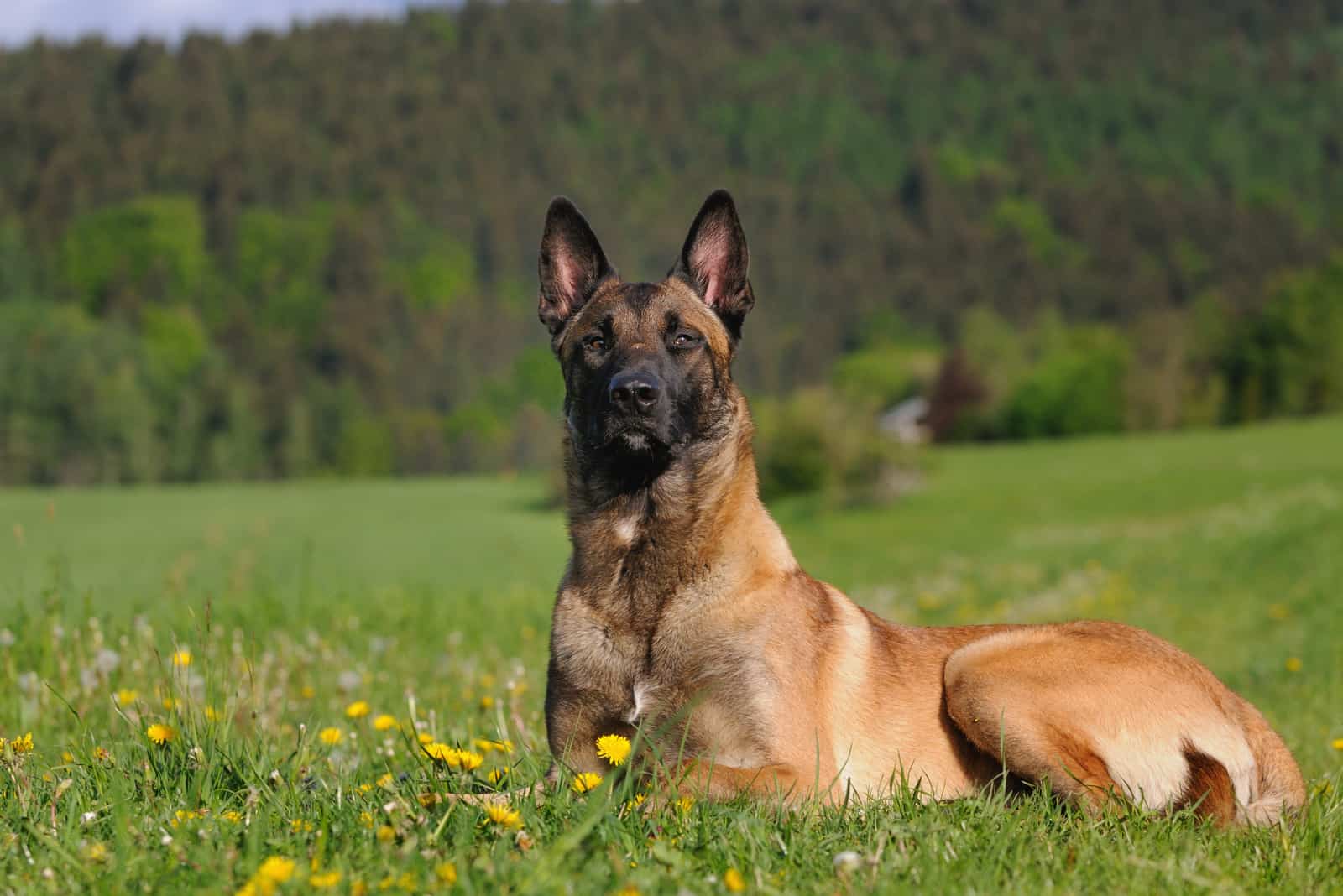
When it comes to Belgian Malinois colors, this is where things become a bit tricky. This is because of kennel clubs and different breed standards. Let’s explain.
There are many kennel clubs worldwide. Four of the largest ones are the American Kennel Club (AKC), the United Kennel Club (UKC), the Canadian Kennel Club (CKC), and the Fédération Cynologique Internationale (FCI).
Each of these kennel clubs can have its own version of how a specific dog breed should look. This is what leads to the separations inside a dog breed.
For example, you have both a European Doberman and an American Doberman. These two dog breeds used to look and behave the same, but as time passed, local breeders adjusted their litters to make them look according to the regional breed standard. This is why two dogs of the same breed might look different even though both are purebred.
These kennel clubs also determine what Belgian Malinois colors are allowed and which are frowned upon. This can highly influence the dog’s appearance.
Of course, the colors we’re mentioning only apply to purebred Belgian Malinois. Most Mal mixes, such as a Belgian Malinois mix with Labrador, can come in a much larger number of colors – but they aren’t accepted by the AKC or other large kennel clubs.
Can Belgian Malinois Colors Prove if A Dog Is Purebred?
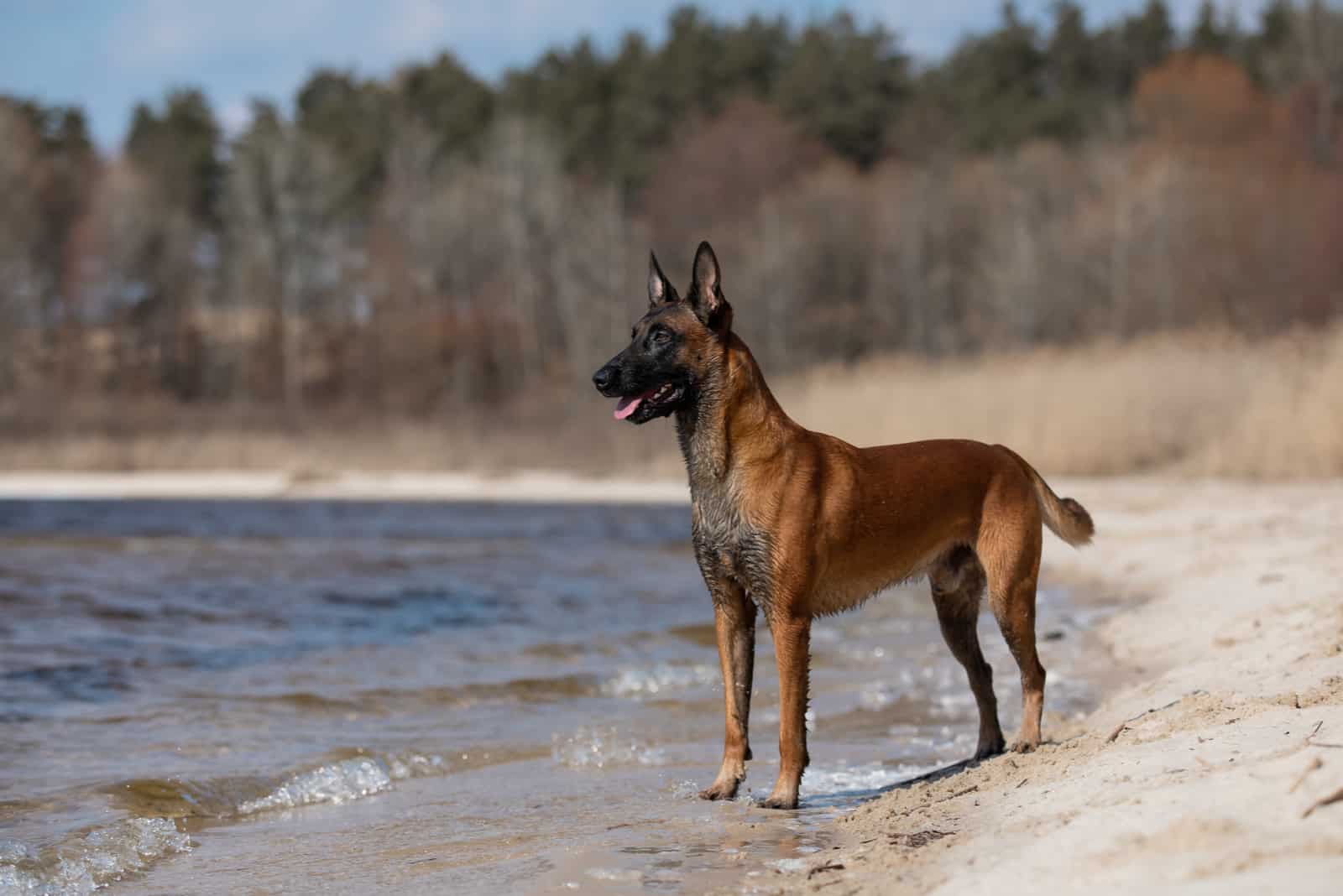
In short, no, you cannot know if a Belgian Malinois is purebred just by looking at it. One reason behind this lies in the differences between the breed standard in different kennel clubs. Secondly, some dogs might have specific coat colors or patterns because of some disease or genetic condition.
The only way you can know whether your Belgian Malinois puppy is purebred or not is request pedigree papers from your breeder or to pay for expensive DNA tests. Documentation is the only way you can determine a purebred dog from a mutt.
While Belgian Malinois colors aren’t proof of the dog being purebred, they can determine whether or not you’ll be able to register your pup within a specific kennel club. This is the main reason why you should always know the breed standard for the dog you own.
The breed standard can also help you know the expected traits of your pup, such as its bodily composition, foundations, personality – and acceptable colors.
Belgian Malinois Colors And Patterns
Most kennel clubs have a list of standard and non-standard colors. While all are accepted, only dogs with standard colors will be able to participate in dog shows and competitions.
For example, according to the AKC, standard Belgian Malinois colors are fawn, fawn sable, red, red sable, and mahogany. However, this is different in some kennel clubs. This table will let you know what we mean:
| Kennel Club | Standard Belgian Malinois Colors |
|---|---|
| AKC | Fawn, red, fawn sable, red sable, mahogany |
| CKC | All shades of fawn to mahogany, black, brindle, black with tan, grey fawn, blue fawn, white |
| UKC | Fawn and sable with charcoaling |
| FCI | Fawn with black overlay |
Genetics Behind The Belgian Malinois Colors
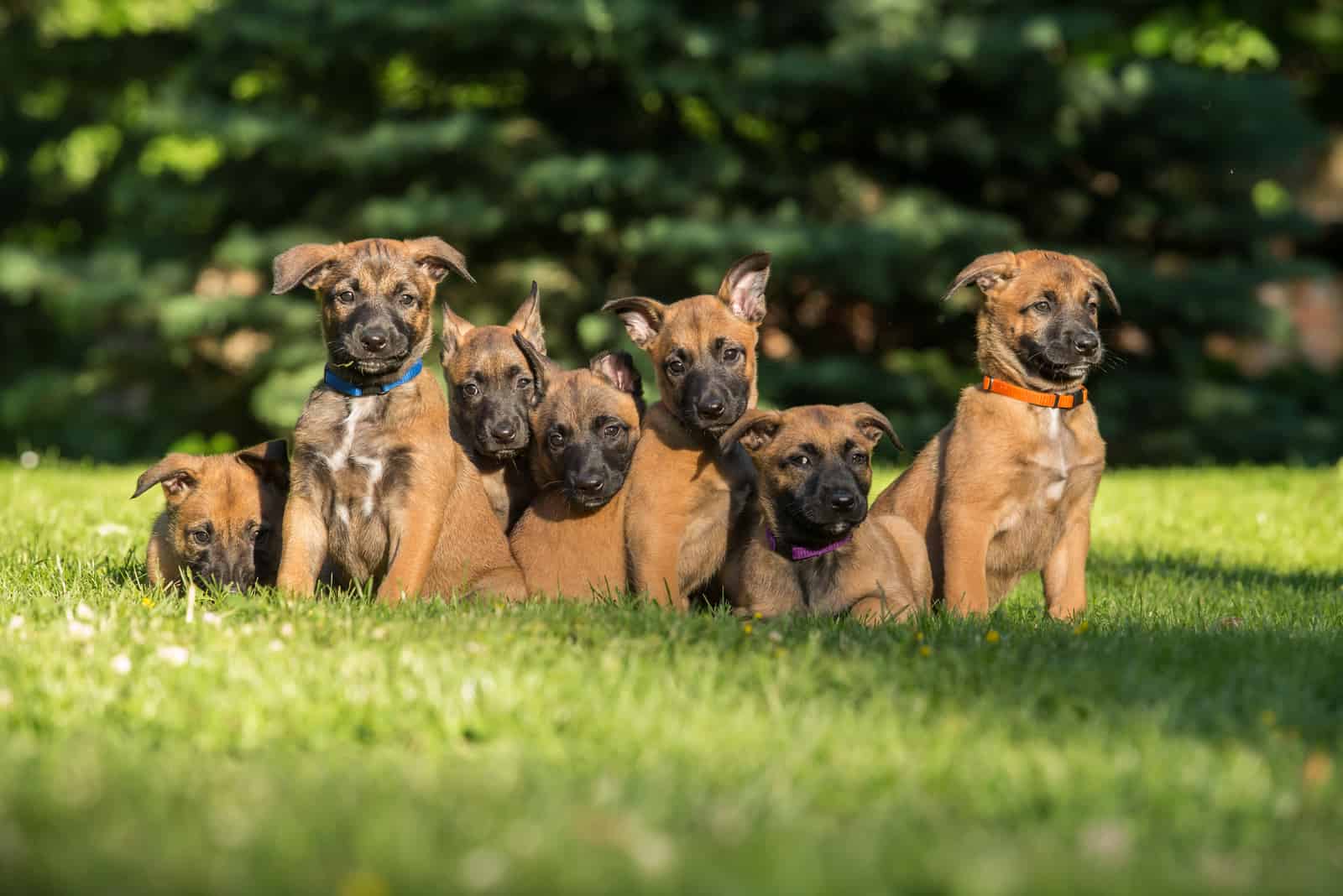
While the genetics behind any dog’s coat color are rather complicated, we’ll simplify everything to make it clearer to the broader audience.
Overall, there are two major pigments that make a dog’s coat a certain way. These are eumelanin, which causes black and brown colors, and pheomelanin, which causes red and yellow.
But, as you have probably noticed, dogs don’t come in just these colors. So, what causes the other shades?
Specific genes alter the intensity and dilution of the eumelanin and pheomelanin, making it appear a different shade than the base color. Every puppy will inherit two color genes, one from each of its parents. This is why there are so many different shades of a single color!
Also, some genes are dominant while others are recessive. Dominant genes will always be visible on the dog’s coat, while it takes two recessive genes for the color or pattern to express itself.
Some breeders purposefully mate two specific dogs to create new colors and shades or further spread existing ones. This is what makes one color more common than another. However, if the only purpose behind this is to alter a dog’s appearance, this isn’t recommended, as it can lead to some health issues later on.
Standard Belgian Malinois Colors
During the further discussion about Belgian Malinois colors, we’ll use the AKC’s breed standard as the norm.
The colors we’ll talk about in this article are the colors that can apply to conformation shows. Keep in mind that not all Belgian Malinois colors are equally common or rare, even if they are considered acceptable.
Fawn Belgian Malinois Colors
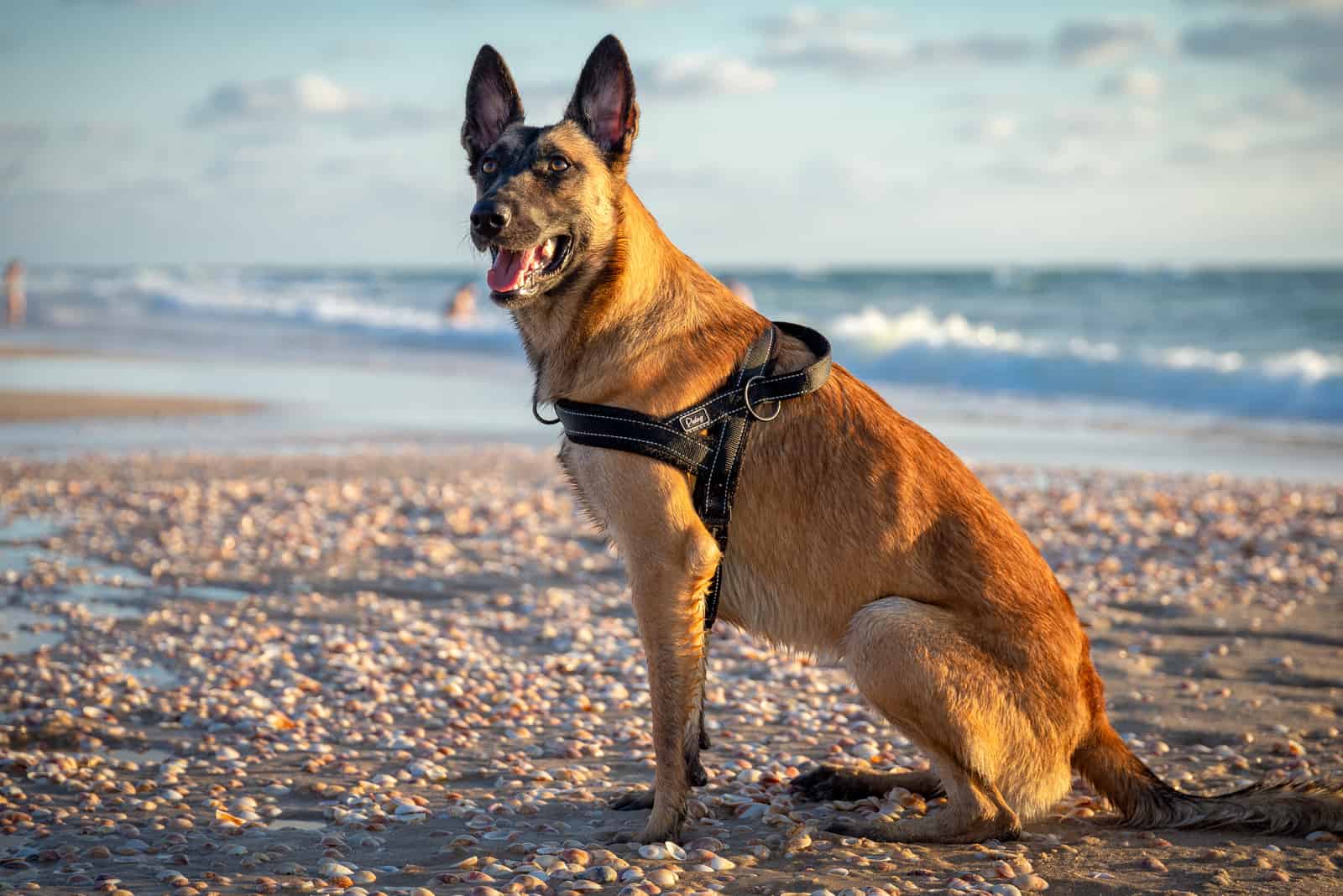
Fawn is one of the most common Belgian Malinois colors out there. These pups will have a neat and soft look. Most of the time, the shade of fawn will lean toward a yellowish-tan color, and it can vary anywhere between very light to dark colors.
Most fawn Belgian Malinois will have a black mask that will cover the larger portion of their face – most notably, their muzzle, nose, eye rims, and even ears! If the fawn is lighter in shade, this can create a beautiful contrast.
Fawn Belgian Malinois should have a black nose and dark brown eyes.
Fawn Sable Belgian Malinois Colors
Fawn sable Belgian Malinois look like regular fawn Mals but with a sable pattern. If you want to know what sable is – this is when hairs in any base color (which is, on this occasion, fawn) have black tips. This makes them appear darker than regular dogs of that same color.
Many dog owners don’t even realize their Belgian Malinois is sable until the vet or groomers tell them so. This is because some sable dogs simply look like they come in a darker shade of a certain color. This is especially the case in dogs who already come in darker colors.
Just like a typical fawn Malinois, a fawn sable Belgian Malinois should have brown eyes and a black nose. However, their black mask might not be as prominent, as sable dogs already have black shades on their fur.
Red Belgian Malinois Colors
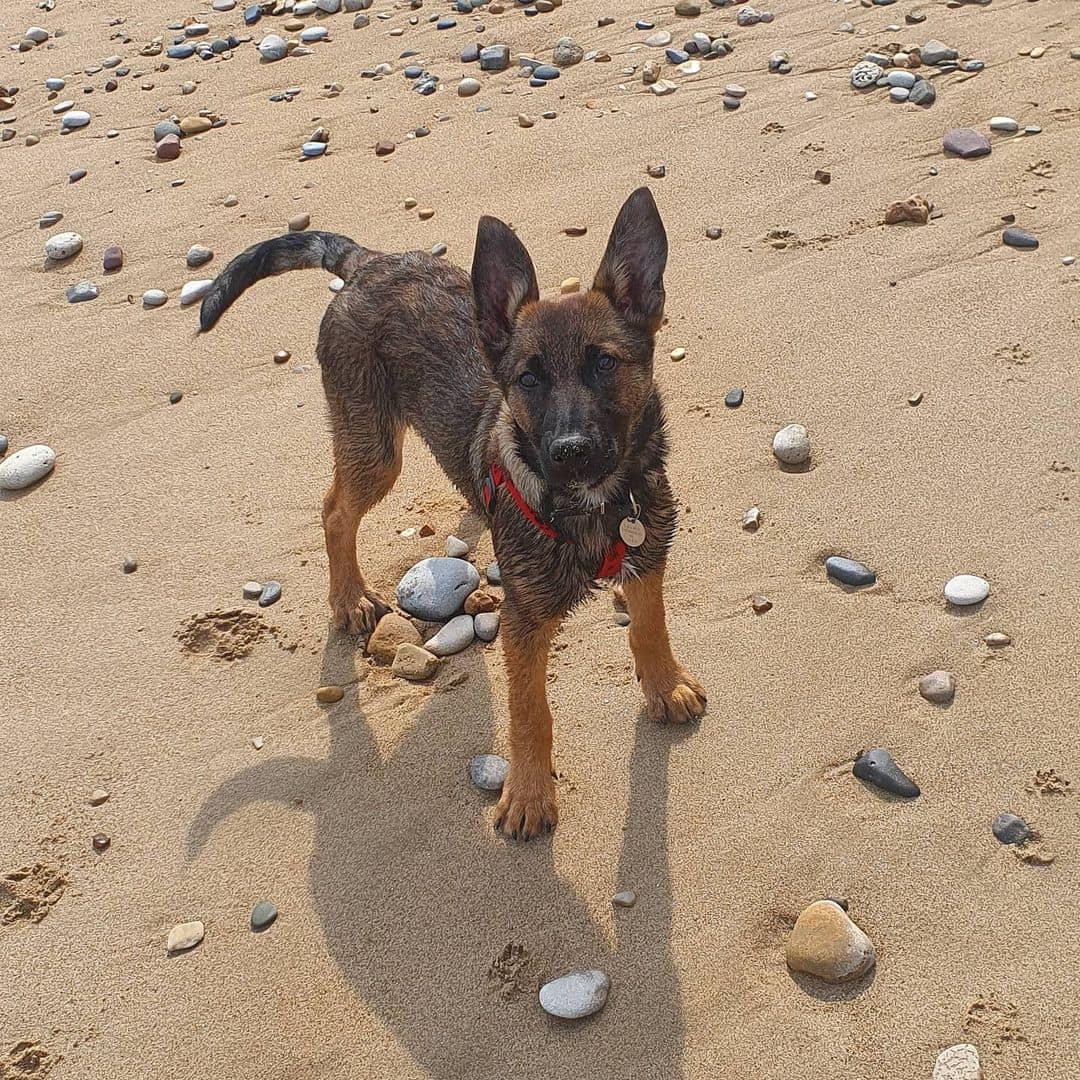
Photo from: @red_belgian_malinois19
As their name suggests, red Belgian Malinois come in a coat that is in some shade of red. Red is caused by pheomelanin, a type of pigment responsible for yellow and red shades.
These dogs can be as light as ginger or as dark as deep red. Some people even confuse them with a rich fawn coat color. The prominence of their black mask will depend on how light their coat is.
Red Malinois are slightly rarer than their fawn counterparts, but they are still fairly common. Most of these dogs will have dark eyes, black ears, and a black nose.
Red Sable Belgian Malinois Colors
Similar to fawn sable Belgian Malinois, dogs in red sable have black tips on their hairs – only this time, the base coat color is red instead of fawn.
These dogs can appear quite dark depending on the shade of their base coat. In fact, some Belgian Malinois owners might not even be aware that their dogs come in sable, as they are so dark.
Just like all other standard Belgian Malinois colors, red sable dogs should come with a black nose and very dark eyes. Their black mask might not be as easy to notice as the mask on pure red dogs.
Mahogany Belgian Malinois Colors
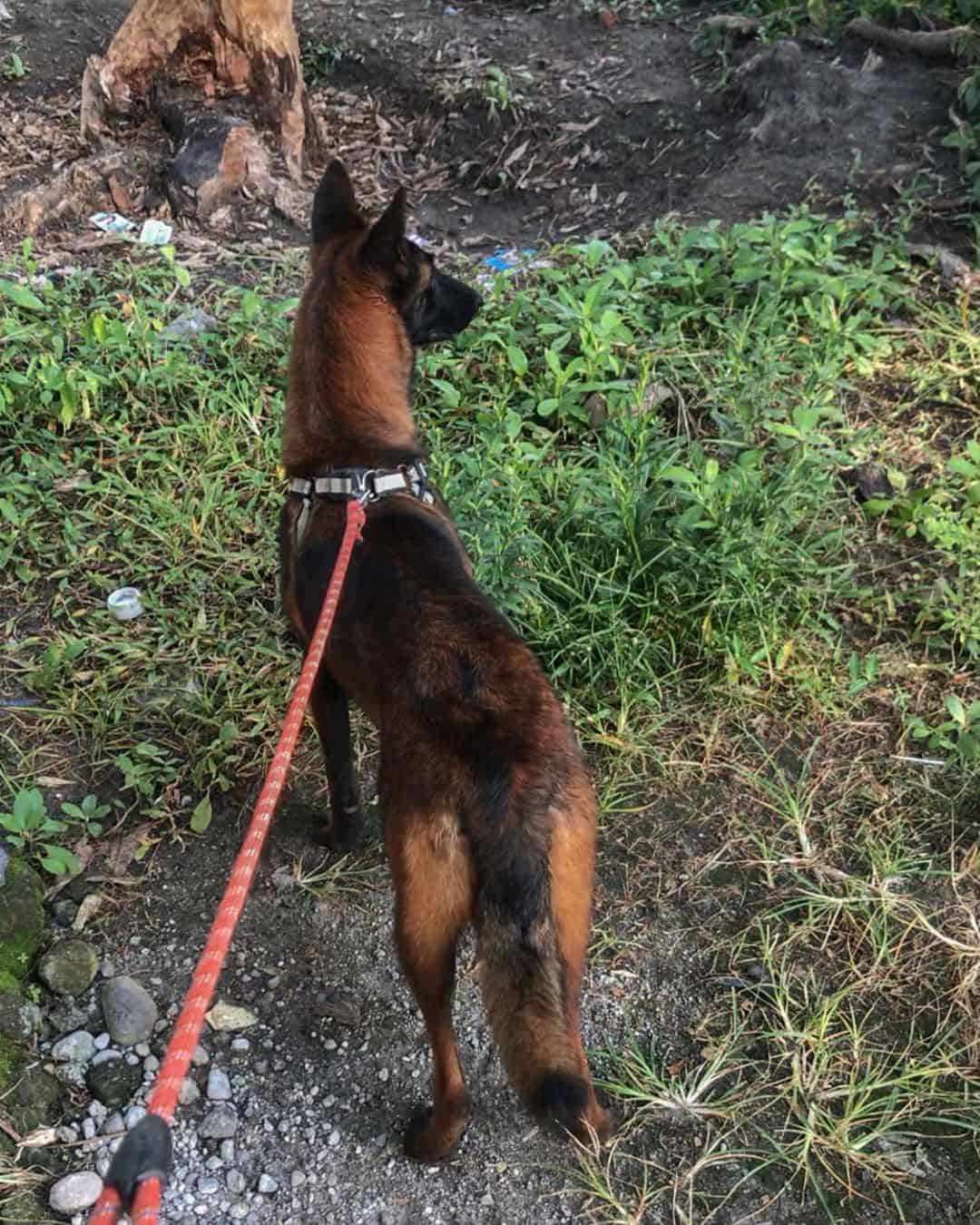
Photo from: @south_canine
Mahogany is a reddish-brown shade that resembles the tree of the same name. They can come in a variety of mahogany shades, from light reddish-brown to a very deep, almost black color.
The exact shade of mahogany Belgian Malinois depends on the distribution of eumelanin and pheomelanin pigments.
In these dogs, a black mask might not look very prominent as they tend to be very dark. Also, they have a black nose and dark brown eyes.
Non-Standard Belgian Malinois Colors
While the AKC recognizes some other coat colors, they are not considered to be within the breed standard. This means that, while you can register these pups with the kennel club, they cannot participate in any dog shows.
This is what these colors are:
Black Belgian Malinois Colors
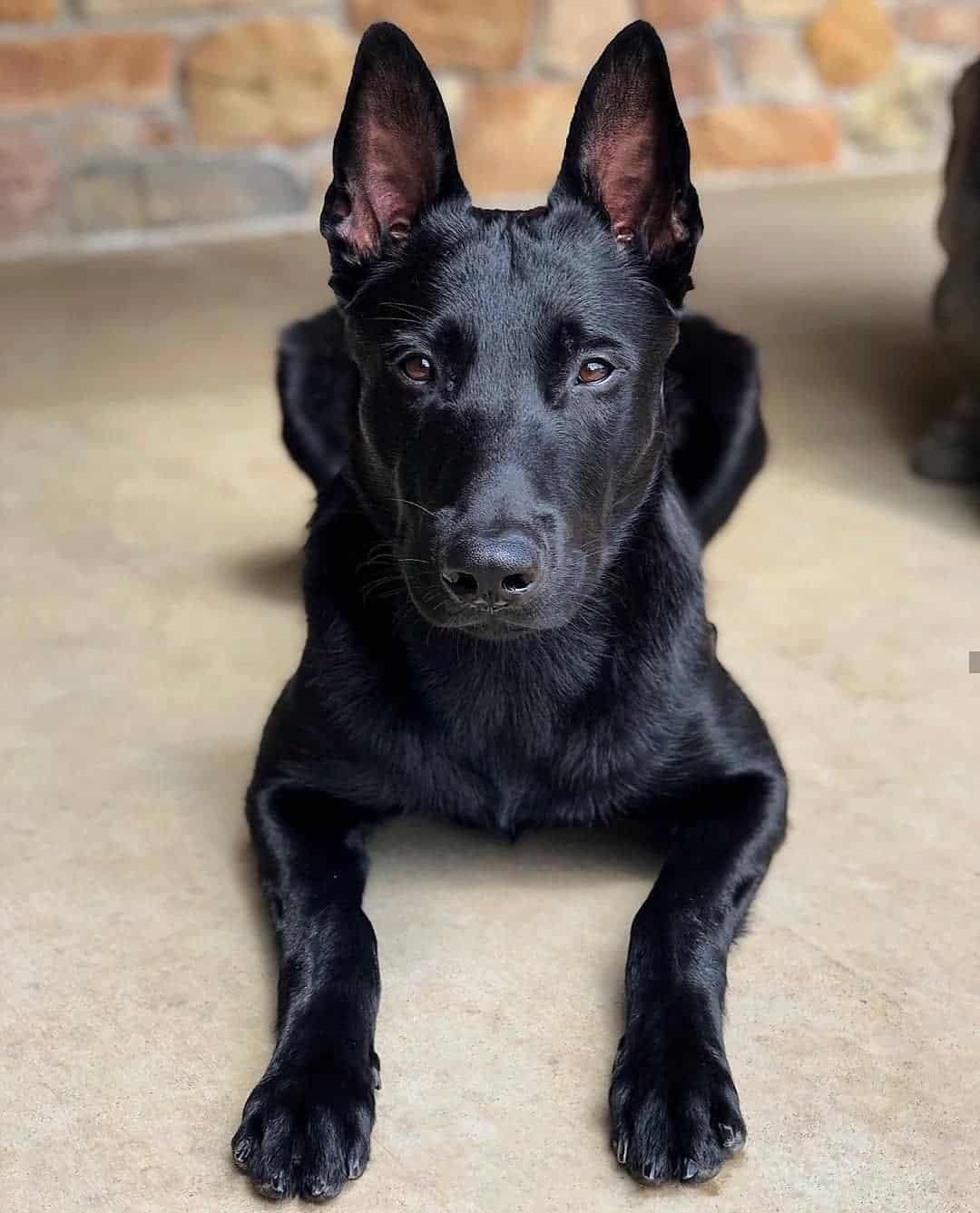
Photo from: @epic_malinois
Pure black Belgian Malinois are very rare. In fact, black is rare in many dog breeds, such as Shih Tzus, German Shepherds, or Shiba Inus. Most will have at least a speck of some other color (usually white or tan). These dogs have a high concentration of eumelanin, the pigment responsible for black and brown colors.
As these dogs have a dominant gene for their black color, their noses, eye rims, paw pads, and lips should correspond with this. Their eyes should be dark brown or even black.
Despite not being a standard color, black Belgian Malinois are very sought-after, and their demand is rising. When you look at their glorious appearance, it’s easy to see why.
Brindle Belgian Malinois Colors
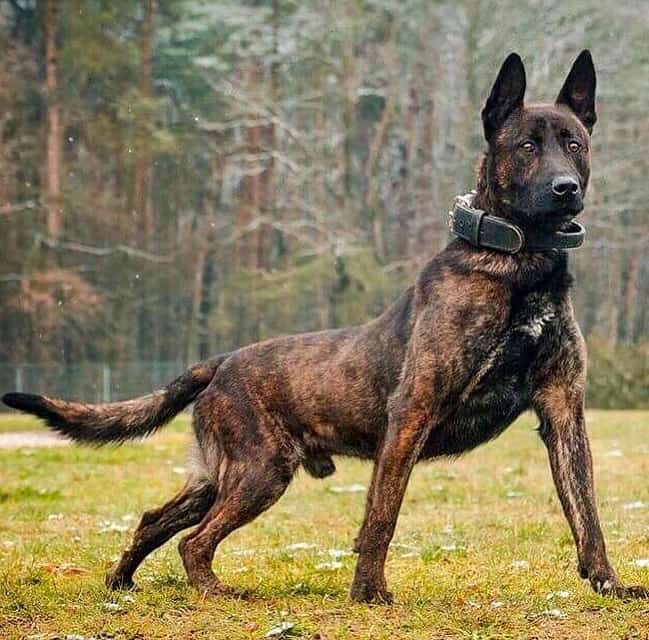
Photo from: @diversity_of_dogs
Brindle is one of the most unique coat colors (or rather, coat patterns) in most dog breeds, and Belgian Malinois aren’t any different.
Brindle dogs are, in fact, dogs with tiger-like stripes. If you see a dog on the street with black stripes, no matter how wide or narrow – that dog’s a brindle!
Brindle can appear on any base coat color, but in Belgian Malinois, it’s usually on fawn or red. The brindle can cover their entire coat or only a portion of it.
While the black mask is desirable for all Belgian Malinois, some brindle Mals lack it due to the unique way the pigment is spread around their body.
Cream Belgian Malinois Colors
In most dog breeds, cream is one of the most common colors. However, this isn’t the case with Belgian Malinois, who rarely come in cream.
This color occurs when there isn’t much eumelanin in your dog’s coat. The pheomelanin takes over, coloring it a light yellow to beige color.
Cream Belgian Malinois have a black mask that is rather distinct due to the high color contrast between the two shades. Also, despite the lack of dark pigment on most of their fur, these pups still have dark eyes, noses, lips, paw pads, and eye rims.
Cream Sable Belgian Malinois Colors
Once again, sable is simply black tips of the hair. In cream sable Belgian Malinois, these black tips are rather prominent as the base color is very light. Some dogs might even appear dusty!
Most cream sable Belgian Malinois won’t have a prominent black mask because it will stay somewhat splattered due to the pigment distribution.
Gray Belgian Malinois Colors
Gray – also known as blue by some breeders – is the result of a dilution gene messing with the black base coat. This gene will dilute the black color, turning it into a charcoal gray color that might sometimes have a blue tint.
Because this dilution gene affects the dog’s entire body, its nose, eye rims, and paw pads should also appear dark gray or blue.
At the same time, this is the only occurrence when blue eyes can be accepted within the breed, as this gene also affects eye pigmentation.
Gray Belgian Malinois cannot have a black mask, as all of the black pigmentation is diluted and turned to gray – but there is one exception.
Gray Sable Belgian Malinois Colors
Gray sable Belgian Malinois are only gray Mals in which black color is allowed – and it’s located on the hair tips. This gives them somewhat of an overlay appearance.
As these pups already have a very dark base color, it can be hard to tell if your Belgian Malinois is sable or not. However, most groomers will point this out right away.
Just like with gray Belgian Malinois, these dogs should always have gray noses, ears, paw pads, and lips, as well as somewhat lighter eyes than regular.
Liver Belgian Malinois Colors
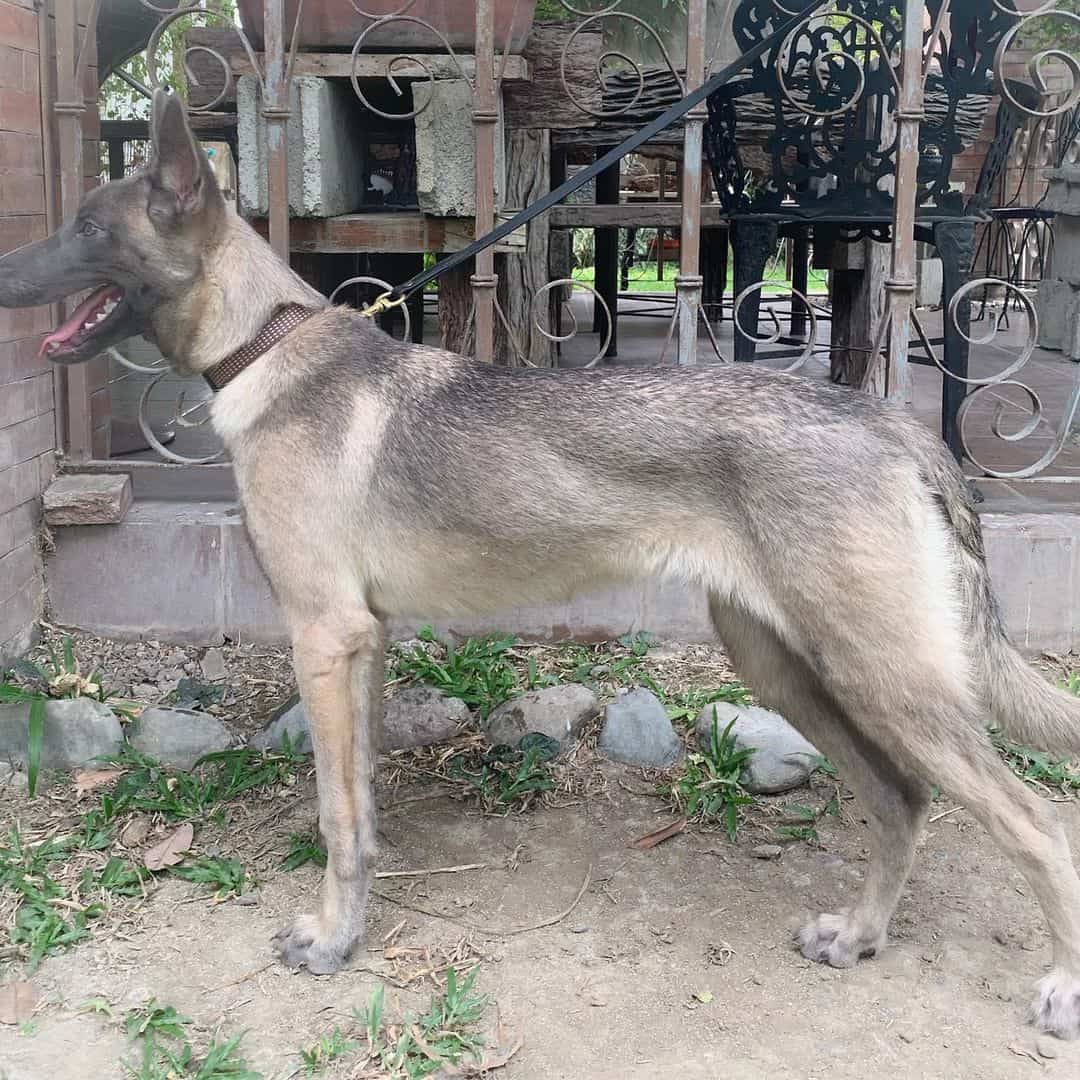
Photo from: @aurum_theliver_belgianmalinois
Similar to gray, the liver color is also caused by a dilution gene. However, on this occasion, the dilution occurs in the B locus. It is caused by a recessive gene, meaning that the Belgian Malinois puppy should inherit it from both of its parents for the liver color to express itself.
Liver Belgian Malinois appear in any shade of red, yellow, or cream, depending on how much pheomelanin pigment is on their coat and how intense it is. These dogs usually won’t develop any gray hairs, as graying isn’t possible on such a coat color.
As this dilution affects the dog’s entire body, this means its nose and paw pads should also be liver. On the other hand, its eyes should be light brown or even amber-colored.
Rare Belgian Malinois Colors
As we’ve mentioned before, just because these colors are considered standard doesn’t mean all of them are common. In fact, a few of them can be considered very rare.
In Belgian Malinois, brindle is the rarest allowed coat color. There are two likely reasons behind this.
First off, brindle is caused by a recessive gene. This means that just because the brindle gene can be found in the dog’s genetics, that dog doesn’t have to have a brindle coat. Instead, it has to be inherited from both parents.
Secondly, brindle isn’t a color that is natural in modern Belgian Malinois – unlike in some other working dogs, such as the Dutch Shepherd. If you happen to run across a brindle Mal, chances are he has some distant relatives that were crossbred with a German or a Dutch Shepherd.
The Most Common Belgian Malinois Colors
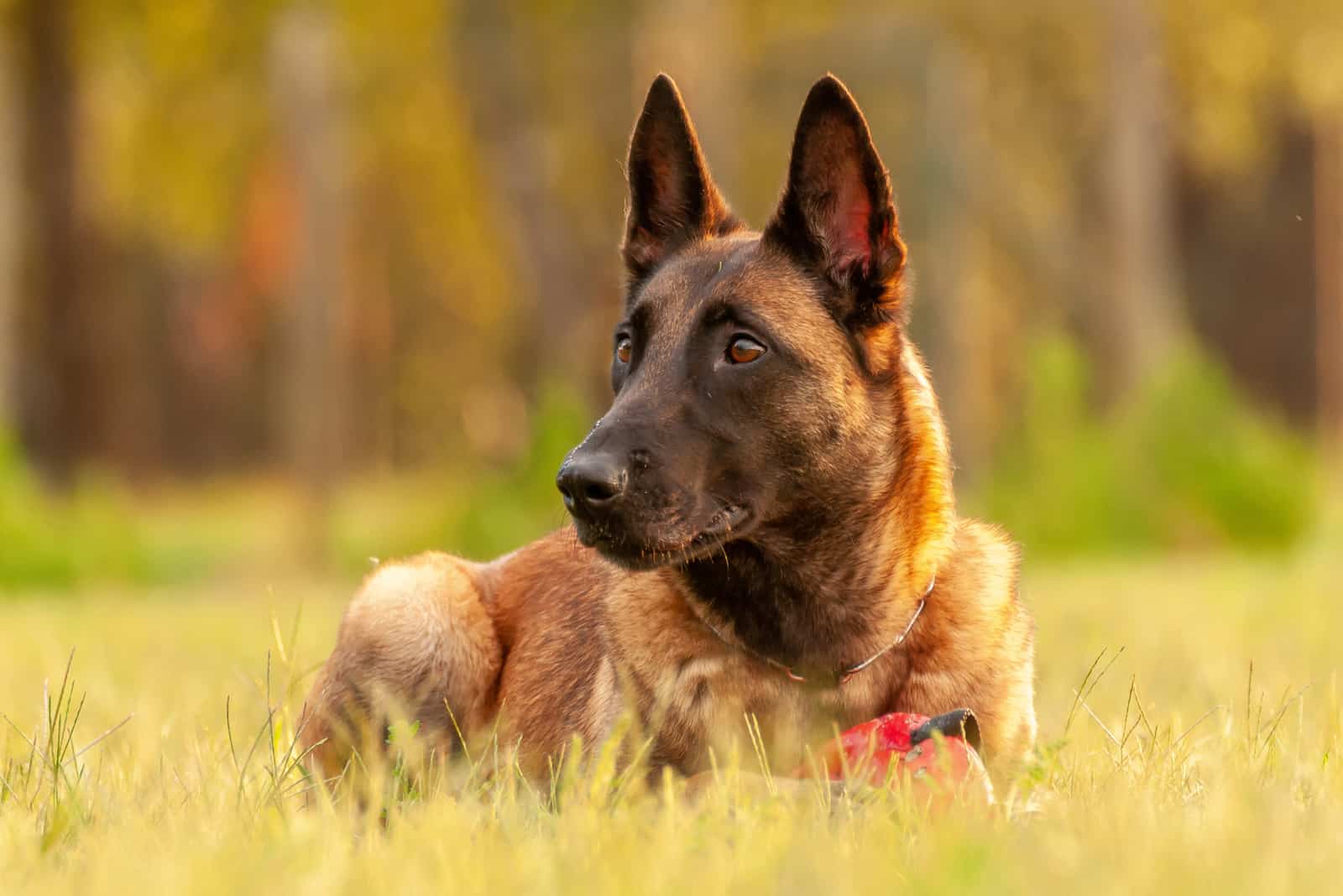
Most standard Belgian Malinois colors are pretty common in this breed. This includes fawn, red, and mahogany – although some dog breeders would argue that fawn is the most common out of all of them.
Other than that, a black mask is a prominent pattern in the breed. In fact, this is the only allowed type of marking according to the AKC. All Belgian Malinois colors, except for liver and grey, should have a larger or smaller black mask.
This mask has to cover Mals’ muzzles, but most of the time, it extends over to their noses, eyes, and ears. Yes, most Belgian Malinois will have black ears.
Belgian Malinois Colors That Aren’t Allowed
While not all colors are considered a breed standard, some colors are entirely banned from the breed, and you cannot register them. In fact, intentional breeding of these Belgian Malinois colors is frowned upon.
This is because these coat colors are connected with an increased chance of developing certain health problems.
Unfortunately, because of their rarity, many of these ‘forbidden’ Belgian Malinois colors are very popular and sought after, which is why they can still be found at many unreliable breeders.
Here are some of them:
Merle Belgian Malinois Colors
Merle is one of the coat patterns that is considered to be very beautiful. However, this is also one of the most dangerous Belgian Malinois colors out there.
Merle is caused by a dilution gene that dilutes all colors on your dog, not just its coat. When a pup inherits a merle gene from just one parent, he’ll most likely have the specific pattern that gives him that unique appearance.
Merle appears as splotches of different shades of color on a white base. Most of these dogs are tricolor, but more shades are possible. They also come with blue eyes or even heterochromia.
If a dog inherits two merle genes, he is considered a ‘double merle.’ These pups will appear white with bright blue eyes.
Unfortunately, as the merle gene is very aggressive, it won’t stop at just the dog’s fur. Instead, it will dilute all it can on the dog’s body.
This is why merle dogs tend to be prone to many health issues, such as deafness, blindness, or even some bone issues, such as elbow dysplasia.
White Belgian Malinois Colors
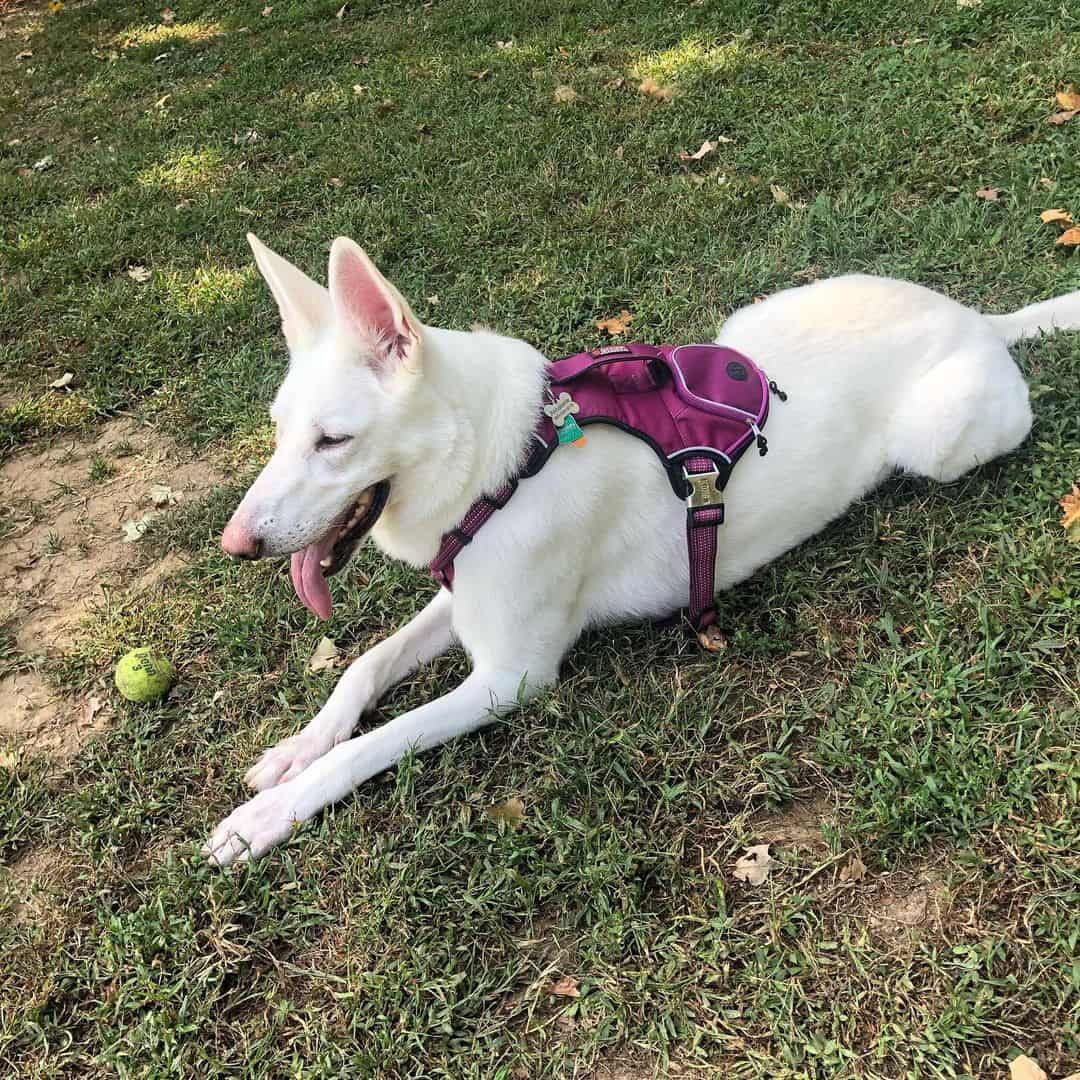
Photo from: @lisammcfarlin
In some dog breeds, white can come as a quite natural color. In Mals, however, this isn’t the case, and white is always the product of some condition.
One of the reasons your Belgian Malinois appears white can be the merle gene. If a dog is a double merle, the entirety of its fur will be diluted. These pups have bright blue eyes, and almost all of them are deaf. Double merles are known to have a shortened life span, which is why they are considered undesirable by most responsible breeders.
Another cause of white Belgian Malinois could be albinism. This condition makes a dog be born without any pigment at all. These Mals usually have pink noses and bright eyes – often with a red tint.
Albinism is also linked with many health problems, such as blindness and heart issues. This is one of the main reasons why the intentional breeding of albino Belgian Malinois is so frowned upon.
Bicolor Belgian Malinois
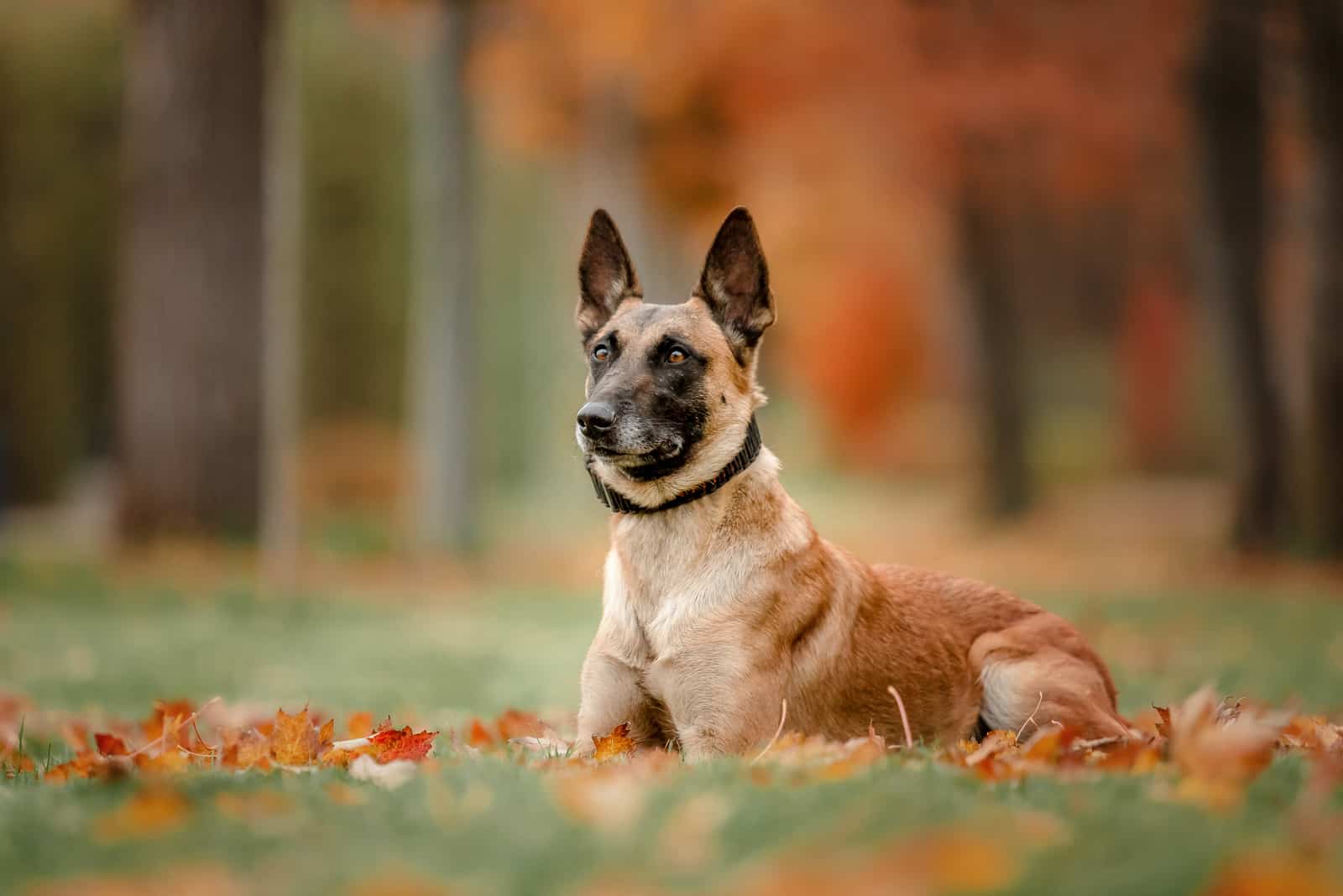
Many people Google bicolor Belgian Malinois colors, thinking that these dogs are rare. The truth is, almost all Mals are bicolor!
This is because the black mask is considered mandatory for most coat colors. This alone is enough to make your Belgian Malinois be considered as bicolor.
What you’re probably looking for is a tricolor Belgian Malinois. This is when a dog has a base coat color, a black mask and ears, as well as some third color elsewhere on its body.
Tricolor Belgian Malinois aren’t as rare as they might seem. Many Mals have small white markings on their bodies – usually on their chests or stomachs. The breed standard usually allows this, as long as these markings aren’t overpowering or too noticeable.
Does Color Really Matter?
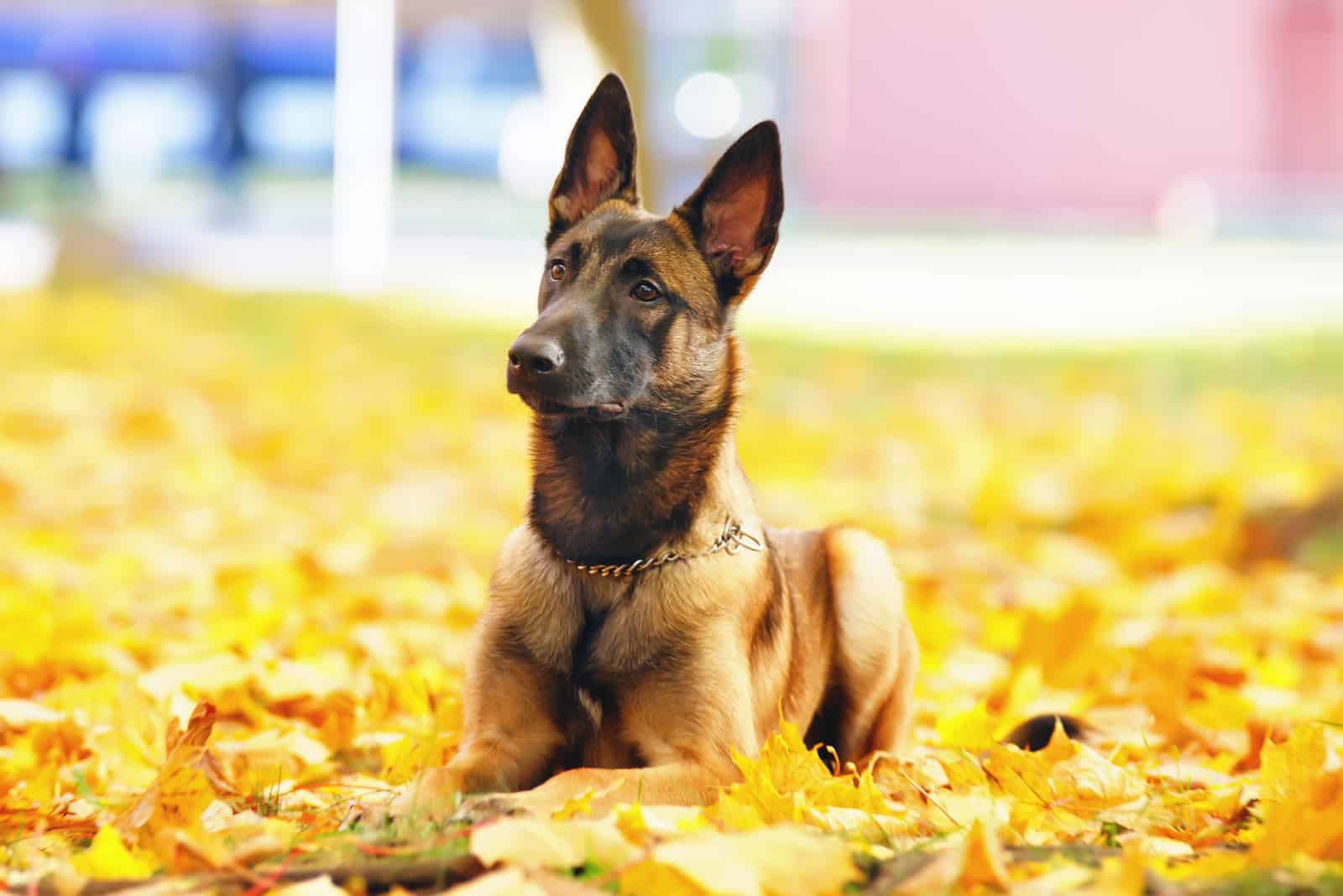
Many rumors circulate about coat color affecting a dog’s behavior. For example, chocolate dogs are considered unfriendly, while yellow ones are considered to be the best family pets.
Truth be told, coat color and patterns won’t affect a dog’s behavior in any way. A dog will be as good of a pet as you train him to be. While certain traits can make a difference, it all comes down to that individual dog and how well you’ve taken care of him.
On the other hand, coat color can affect a dog’s health to a certain extent. As mentioned before, some Belgian Malinois colors are connected to the increased chance of many health problems, such as vision and hearing loss.
If a dog has any dilution gene – and this includes liver dogs, as well – this gene might make your pooch more prone to health issues.
While it’s open to discussion whether these health problems can influence a dog’s behavior, whether a Belgian Malinois will be a good pet or not depends entirely on the dog itself and not its colors.
Do Belgian Malinois Colors Change Over Time?
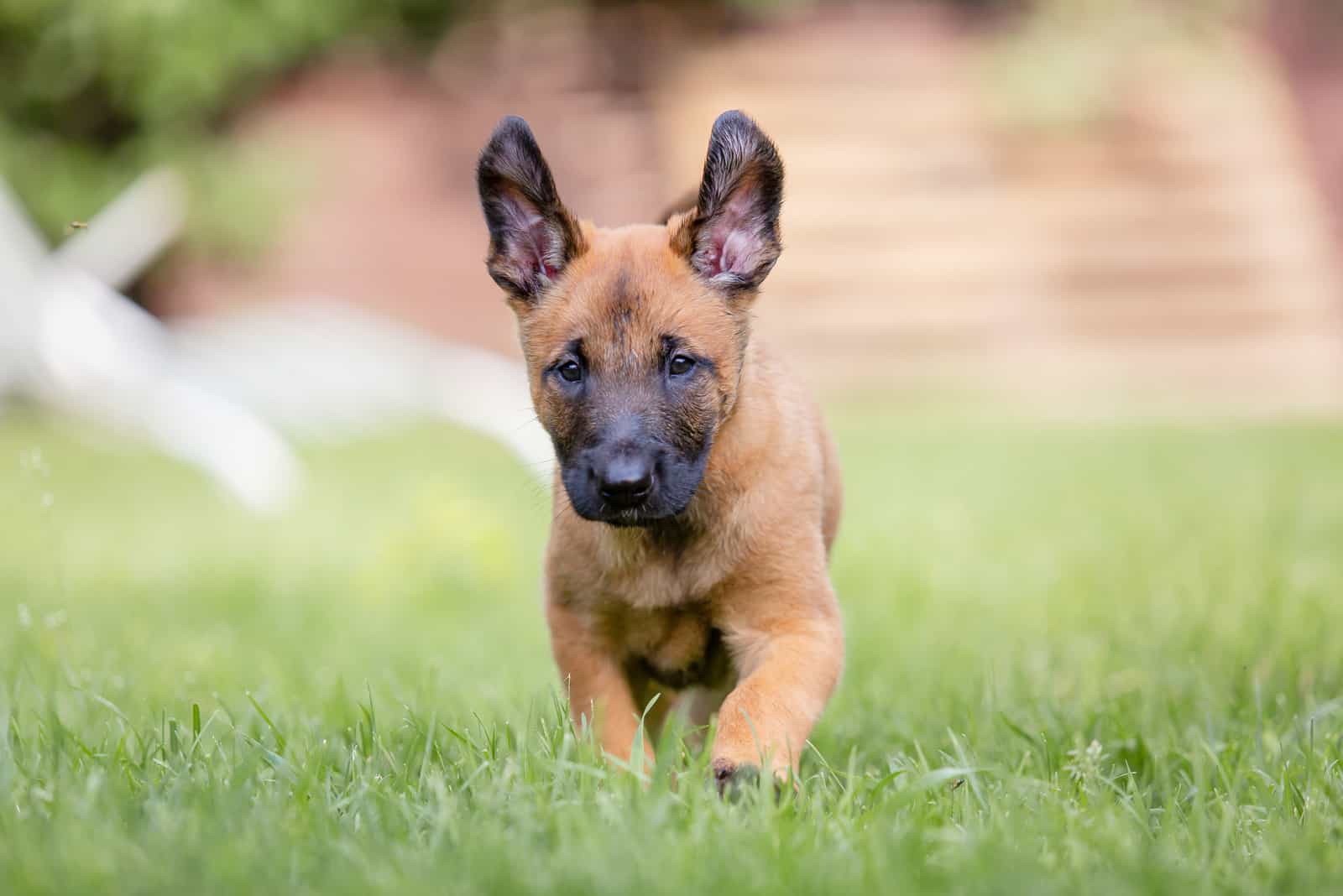
Malinois aren’t among the dog breeds known for changing coat colors. A puppy will most likely keep its appearance throughout its life.
In other words, a fawn-colored puppy won’t magically turn red, just like a black puppy won’t fade and become mahogany.
However, the exact coat shade might experience some change over time, especially during the transition between puppyhood and adulthood. Still, a dog won’t change its color entirely just because it’s exiting puberty.
Eye And Nose Colors
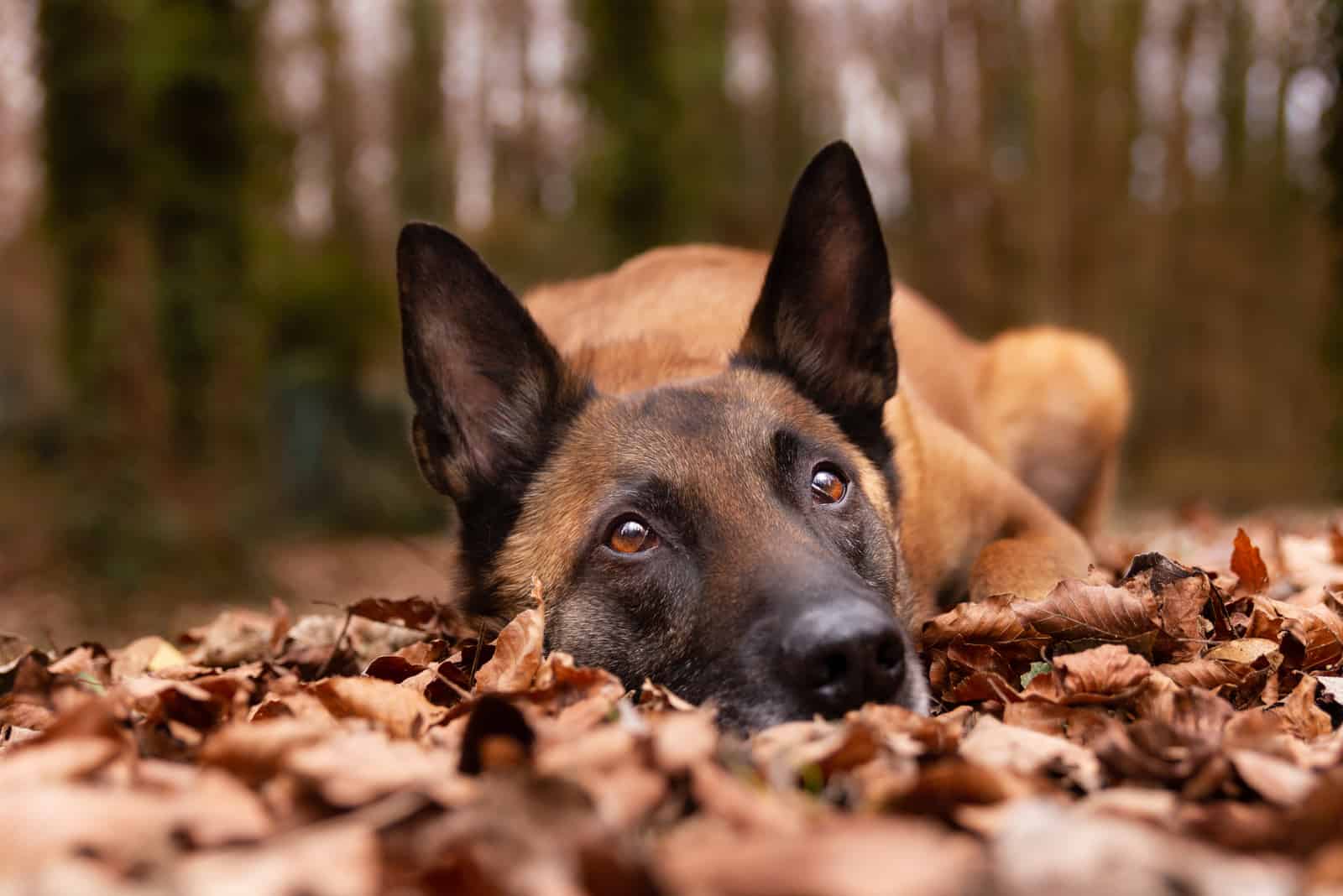 Before you go, we have to mention a few words about Belgian Malinois eye and nose colors.
Before you go, we have to mention a few words about Belgian Malinois eye and nose colors.
According to the AKC (as well as most other major kennel clubs), Belgian Malinois should have medium sized-eyes that are slightly almond-shaped. They cannot be protruding in any way, shape, or form.
The eye color of most Belgian Malinois should be dark brown or even black. The only exceptions are liver and grey Malinois, whose eye colors can be lighter – sometimes even blue or amber. This is all due to the dilution gene that makes Mals’ eyes lighter.
Also, most Belgian Malinois should have a dark, black nose. However, liver and grey dogs may develop dilution, which will make their noses brighter. Some pups even have discolored areas on their noses, giving them a unique appearance, which still may mean your pup might develop some health condition.
Which Belgian Malinois Color Is The Best For You?
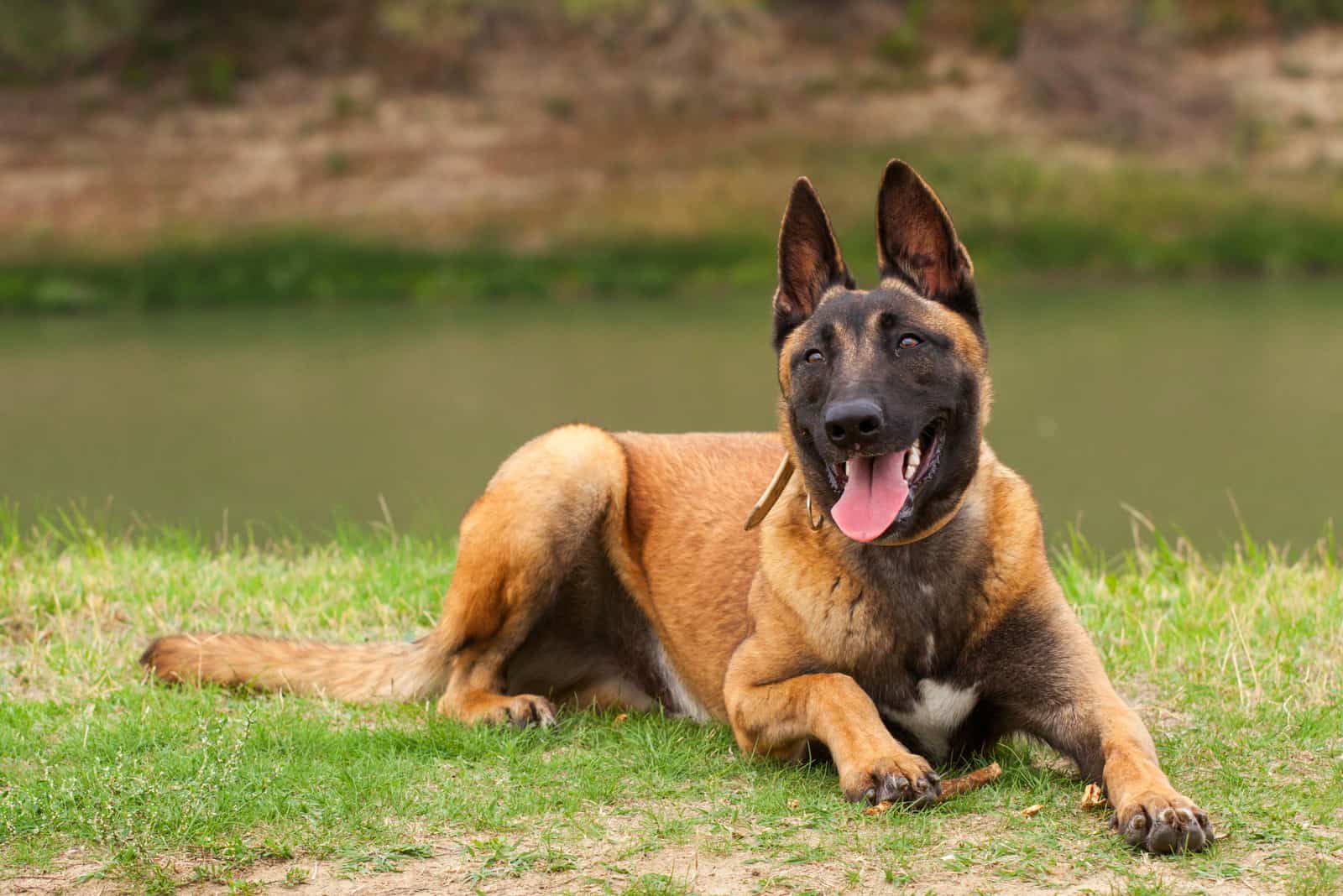
Dog color is important, as we all want pets that look their best. But how can you know which one is the best for you?
The answer is simple – just pick the dog that looks the best to you and has papers proving he is healthy! Anything other than that is superficial and unnecessary.
All Belgian Malinois can make great family pets as long as you’re able to provide them with a firm hand and patience. These dogs require extensive dog training because they have been taught to bark at strangers or even show aggressive tendencies.
This doesn’t mean that Mals are aggressive by any means. On the contrary, many will believe they are lapdogs well into their lives! Still, you have to be careful when picking these dogs, as they aren’t good for novice dog owners.
You should also consider the rarity of a specific Belgian Malinois color you might want to get. The rarer the color, the higher the price. Sometimes, this price may not be worth the dog’s value.
Still, if you don’t mind giving a breeder a fine sum of money, nothing is stopping you from purchasing one of the more expensive Belgian Malinois colors. Just remember that all of these dogs require a lot of care and attention. If you give them this, they’ll give you lots of colors to make your life a better place.
Read Next: All About Military Belgian Malinois: Favorite K9 Fighter
